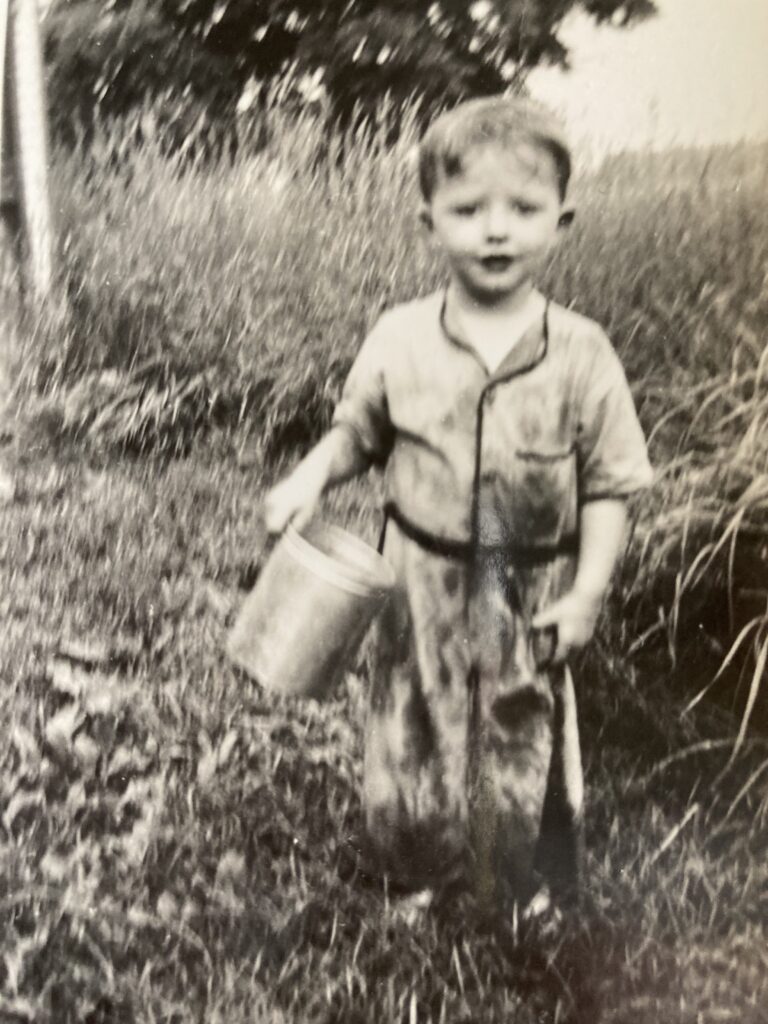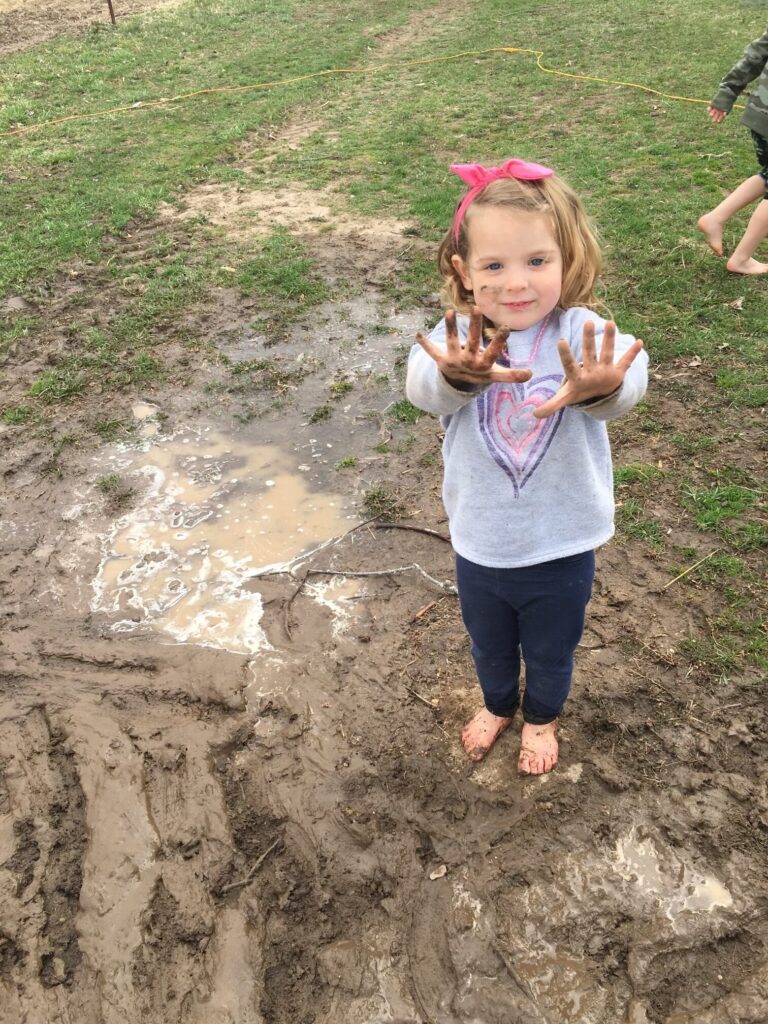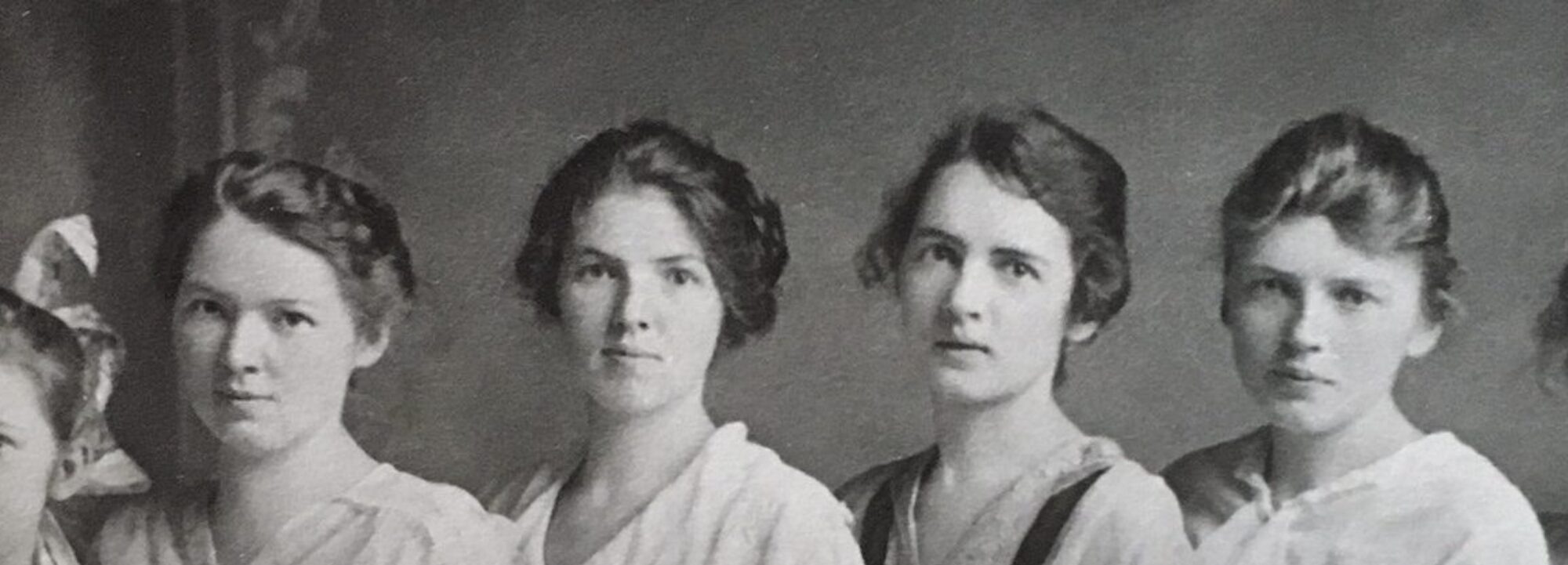It is true that “April showers bring May flowers.” How we all look forward to those early daffodils, crocuses, and tulips. Their hopeful, fragile tips are stretching and surfacing in our gardens.
And our moods are lifted by the eventual sight of flowering shrubs and trees decorating yards, wildflowers adorning area roads, and dogwoods brightening edges of Michigan woods.
But when you live on a farm, April showers bring mud.
Mud on boots. Mud tracked into the house. Mud up the back steps. Mud clinging to clothes. Mud in the barnyards.
Everywhere mud, mud, mud!

In the early 1970s, our 4th grade class took a field trip to the “Conserv-A-Rama,” a program for elementary-aged kids where we learned about the water cycle and soil erosion. Mr. Dick Bailey offered hands on activities, demonstrating these interesting ideas at the Kellogg Biological Station.
When we returned home, my brothers and I applied these concepts as we played in the mud around the barns, digging tiny trenches to connect the various puddles, watching water run from one miniature pond to another, imaging the eventual emptying into the sea.
We relished mud: the slurping of our boots as we trudged and explored; our boot prints filling with water behind us; our experimental handprints; the mud pies and cakes slapped and shaped in whatever container we could find; and our happy presentation of the sloppy creations to one another.
“Here you go! It’s delicious!” or “Happy birthday, brother! I baked this for you!”
At the end of the day, we were incredibly dirty and satisfied with our unsupervised adventures. After those April showers and our uninterrupted play, our mother met as at the back door, firmly directing us to remove our boots and outer layers.
Eventually, our parents included a “mudroom” when they renovated our farmhouse. After we children had been outside, or our dad came in from his farm work and chores, we each had spots to hang our coats and place our boots. This sure was a wise and practical addition.
After raising three children—and operating a daycare when our children were young—a mudroom would have been wonderful. Like most tri-levels built in the 1960s, after outside play, our children stepped into our kitchen, where I was usually busy with meal preparation. Our little ones kicked off their boots, their little faces grimy and full of joy.
Mudrooms are still popular today. These spaces are showcased in design magazines, and you can find pictures of them on home renovation websites.
I hope children who live in these featured homes in the glossy magazines get good and muddy.

I hope they need and use a mudroom!
There are things I miss about living on the farm: the quietness of the evenings and the sunrise over the fields. I miss the planting and harvesting traditions and living so close to the land.
And sometimes, yes, I even miss the mud.
It’s a Fine Life.
